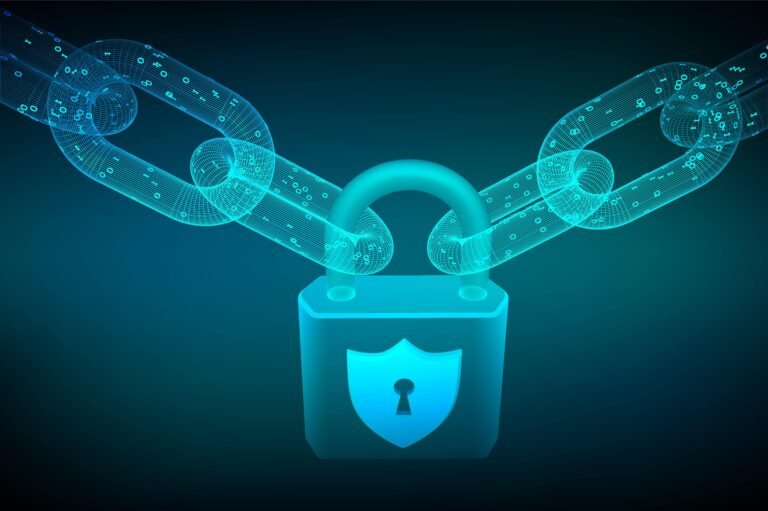Which Of The Following Is Achieved By Security Orchestration Automation Response?
SOAR is the acronym for Security Orchestration Automation Response. In other words, with each passing day, the dynamics of the cyber threat that keeps changing so fast, and staying ahead of the trends is very important for you. And SOAR is one of those big things that help to make that challenge something you can manage. SOAR platforms streamline the security toolsets and systems into an orchestrated response to the threat. This reduces incident response time while improving the efficiency of security operations. Through the utilization of SOAR, organizations are equipped to effectively manage many alerts, thus reducing the burden on the security team, and hence can fast reduce risks.
The bottom-line benefits of SOAR are operationalizing complex processes to ensure a proactive security posture. From a proactive security view, SOAR empowers security teams to become more decisive with orchestrated security resources, repeatable task automation, and synchronized response strategies. All these gain more importance in present times when cyber threats are growing exponentially in sophistication and volume. This is the kind of landscape that leaves massive scope for security teams not tuned toward the quick identification, assessment, and remediation of threats. SOAR, in this case, involves a structured basis where security teams can easily identify and assess before eliminating in bulk; it is an essential part of modern cyber strategies.
What is SOAR?
Security Orchestration Automation Response (SOAR) is an advanced solution that marries software tools to processes, bringing automation in the management and responding to cybersecurity threat intelligence in a controlled manner. The technology enables organizations to collect information across diversified security systems and respond to cyber threats it. SOAR tools are designed to help security teams manage and respond to lots of alerts. This implies that the SOAR tool gives you the possibility to convert noisy, sometimes full of alerts and signals, security systems into useful and easily managed intelligence.
SOAR at the core has three main capabilities, such as Orchestration, Automation, and Response. Orchestration is a crucial tool in ensuring seamless communication between different technologies, including orchestrated security tools and coherent integrated operations. On the other hand, automation should serve as a way of improving daily activities without any interference or intervention from a person so that security professionals have time for strategic actions. Last of all, response means taking action and deploying the necessary actions to ensure the management of the incident is appropriate and timely. Moreover, SOAR platforms help in alerting and responding to threats, offering tools that support preventive measures, hence making security operations proactive rather than reactive.
It enables an organization to fine-tune the security posture in line with substantially accelerating time to responses, thereby optimizing the efficiency of their Security Operation Center (SOC). Thus, SOAR is a valuable contribution to further enhance the arsenal of protection against cyber threats for digital environments with more sophistication.
What are the Key Capabilities of SOAR?
Key capabilities address how SOAR platforms improve the efficiency and effectiveness of cybersecurity operations. Such features should take into consideration the basis for SOAR success in complex security environments.
- Threat and Vulnerability Management: SOAR tools capture data from many areas that need to be studied and delivered as a possibility of threat or vulnerability. This makes it possible to identify security issues at the early stages, hence acting timely by intervening before they accumulate into substantial breaches.
- Incident Response Automation: One of the key functions of SOAR is the incident response process; it includes all from alert, initial triage, and threat containment and eradication. It ensures that, on the other hand, it ensures that the responses given are fast and consistent, therefore reducing the chances that human error is highly probable, and the effects of such security events.
- Case Management: SOAR solutions offer a structured way of managing the incident response activity, covering all aspects of the security incident investigation and response through a set of tools that organize, manage, and document the process to assure review and compliance by the respective task holders.
- Workflow Automation: Predefined response processes to different types of incidents through SOAR automation will be established. This will ensure streamlined operations, that every step taken would be part of a coordinated strategy to bring down the incident effectively in minimal time
- Dashboards and Reporting: Full-fledged dashboards and reporting tools form an integral part of the SOAR platform. These help provide instant visibility over security operations with real-time data points like understanding threats, the status of ongoing incidents, and the health of the system. This shall be crucial in making timely proper decisions.
- Collaboration and Communication: SOAR supports both collaboration between team members and communication across departments. It has embedded communication tools to ensure there is a clear and ongoing flow of information required for coordinated action in response to any cyber threat.
The capabilities make SOAR an indispensable tool for any organization desiring to harden its security postures and improve its management in the cybersecurity operation. With all these roles integrated into a cohesive system, SOAR simplifies the complexities that come with managing the volume of security alerts and enhances the approach to enterprise security with a clear strategy.
What are the Benefits of Implementing SOAR?

Here are a few main benefits that organizations have experienced with Security Orchestration Automation and Response (SOAR) implementations to strengthen their security posture:
- Increased Efficiency and Productive Capability: SOAR allows the security team to drop a weighty amount of tasks by enabling automation of the most repetitive, time-consuming actions, hence having more time available for handling activities that have extremely high complexity and strategic value. Through this gain in efficiency, organizations can handle more alerts without actually growing their staffing by a corresponding alert volume.
- Faster Response Time: SOAR significantly reduces the time taken from receiving an incident to responding to the same. Through automated workflows and predefined response tactics, quick containment and mitigation are possible, therefore reducing, by large margins, the window of opportunity through which the attacker can exploit the vulnerability.
- Consistency and Standardization: In automation, each incident is processed consistently according to standard procedures. This is one way of standardizing the response while there is less chance of errors and oversight of execution by human processes and maintaining the quality control of these responses.
- Improved Threat Detection and Response: The other enhanced feature of rapid development in SOAR is the integration and support of diverse security tools, which provide a holistic view of the entire security landscape. This, together, leads to better detection capabilities as separate data points are correlated to provide a clearer vision of threats.
- Scalability: SOAR solutions provide a more efficient way the scale of security operations. Since SOAR platforms are better armed to handle such increases such as volumes of threats and alerts—they ensure that the scale-up of security measures always equals organizational growth and doesn’t fall behind due to manual processes at security operations.
- Reduce costs: SOAR reduces overall security operation costs through better operational efficiency and the ability to manage more volumes of alerts without increasing staff. They can also respond faster and more efficiently to incidents, therefore reducing any financial impacts if a security breach were to occur.
- Compliance and Reporting: SOAR tools help in compliance management by keeping records for all the responses offered and, in this case, providing reports that detail incident responses for audits. This goes a long way in helping organizational regulatory requirements while at the same time giving insights toward ongoing improvements to practices involving security.
All these benefits prove that SOAR has transformational potential in the security posture of an organization. From the perspective of implementation, it improves not only the ability to respond but also to heighten resilience against general cyberspace threats.
Achievements Through SOAR Implementation
Through the implementation of SOAR systems, some of the most important achievements include the elevation of an organization’s cybersecurity operations. These include the empowerment of the teams to work more effectively under the current pressures posed by modern threats to the threat landscape itself.
- Reduced Incident Resolution Time: Incident resolution time is among the first things that organizations take note of after deploying SOAR. This reduces significantly; a couple of minutes through automated processes that could take several hours, hence limiting potential damage and the spreading of security breaches by resolving incidents.
- Streamlined Security Operations: SOAR will bring under one roof a range of security operations and hence bridge any possible gap in effectiveness that might exist between different teams and tools. It, therefore, allows for a more integrated security strategy where all the elements work in concert for improved security standing.
- Enhanced Analytical Capabilities: SOAR helps enhance the analysis and cross-verification of data from different sources. This improves the analytical capability and hence better precision in threat detection, with a deeper understanding of attack patterns for proactive defense and security planning.
- Improved coordination: Better tooling working together well and improved communication mean SOAR ensures an incident response has all members of the security team moving in the same direction. This improved coordination will be the determinant in dealing with very complex threats requiring collective expertise and rapid decision-making.
- Higher compliance levels: The platform SOAR provides audit trails, logs, and detailed reports that help improve the level of compliance of an organization to meet the required standards. Such records become handy in the event of an audit, which will indeed point to an organization that is meeting the standards set by the industry and best practices in its operations.
- Cost-Efficient: SOAR calls for an upfront investment, but the long-term returns are quite high. There is less big-scale manual monitoring and responding to enable automation; therefore, operational costs are cut. Other than that, SOAR can help organizations keep off the large fines and high remediation costs that have to be spent following data breaches if major breaches do not occur.
- Scalability of Security Practices: With the organization’s volume, the need for security volume will grow. SOAR systems are designed in a way they can be scalable depending on the volume of data and complexity of operations to larger amounts of data and more sophisticated operations without losing performance. This will ensure that the scalability approach to security will continue to grow with the company so that at any level of its growth, it may continue maintaining solid protection.
These are just a few examples of the kinds of achievements that demonstrate why SOAR is so much more than a tool; it’s a strategic asset that can change the way organizations work with their security operations. Effective leverage of SOAR, being Security Orchestration and Automation Response, is expected to help boost effectiveness not only in solving the current security problems that organizations face but also improve preparedness for other imminent threats.
Challenges and Considerations in SOAR Adoption
While the gains from the implementation of Security Orchestration Automation Response (SOAR) are huge, there are several challenges and considerations that most organizations should brace for, to make the adoption and implementation successful. This is to understand the emerging potential challenges when it comes to a smoother transition for the optimum use of the SOAR capabilities.
- Integration Complexity: One of the first challenges in adopting SOAR is integrating with existing security tools and systems. Organizations often use a diverse array of security solutions that may not be readily compatible with one another. Ensuring these tools can communicate and then bring everything into a SOAR platform is often very detailed planning and, in some cases, large configuration efforts.
- Required Skill Set: Although SOAR mitigates the involvement of many mundane processes, it requires a defined level of expertise in itself to set up and manage. Hence, organizations need either to have expertise already in place or invest in training staff to handle the complexity. This is the kind of expertise that is needed to operate the system; it should be one that allows for adaptation and fine-tuning with time.
- Initial Cost and Resources: SOAR implementation is, basically, quite a costly investment, including buying the software, merging or integrating it into the current software, and, finally, training the employees in its operation. This may pose, although not very high, a significant entry barrier for small organizations or companies with a tight budget. Besides, there is a lot of time and effort taken for the implementation of SOAR that may take away resources from other critical projects.
- Data Overload Management: While SOAR is built to manage huge numbers of alerts, it is critical to note that the work of tuning SOAR to manage the alerts may not be straightforward. Poorly setting up such systems can still inundate teams with too much information, sometimes allowing potentially critical alerts to fall through the cracks.
- Over-reliance on Automation: it brings about over-reliance on itself. Automated processes left unwatched in some instances create opportunities for undesired results—firing of false positives or not escalating important incidents. The key is a balance between automation and human oversight to maintain security and a responsive environment.
- Change Management: Implementation of SOAR tools will often require changes in workflow and operations. These changes, more often than not, will involve personnel used to carrying out operations the traditional way. They make up some of the challenges that need to be managed. Effective management of change should be put in place to ensure the adoption of the security team.
- Keeping Pace with Evolving Threats: Keeping pace with the evolving threats, therefore, cyber threats have continued to evolve, and so, therefore, SOAR continually needs updating on its configurations and updating of the threat intelligence inputs. The implication of such an ongoing requirement of updates, therefore, means that SOAR is not a set-it-and-forget-it solution. It requires a periodic check and adjustments to have the output of peak readiness against threats, most of which might be brand new.
SOAR becomes an essential tool in addressing some of these challenges with a well-thought strategy that encompasses the participation of stakeholders, training, and understanding their goals with SOAR. Factoring such in advance allows an organization to get the real benefit from their SOAR implementation and, thereby, cybersecurity posture.
In Conclusion
Implementing Security Orchestration Automation Response (SOAR) brings major improvements, helping organizations manage and respond to cyber threats more efficiently. SOAR enables security teams to focus on strategic initiatives and tackle more complex challenges by automating routine tasks, integrating different security tools, and speeding up incident responses. Although there are challenges in adopting SOAR, such as integrating it with existing systems, managing resources, and maintaining the system, the long-term benefits like increased operational efficiency, cost savings, and enhanced security posture are invaluable. For organizations aiming to enhance their cybersecurity capabilities, strategically deploying SOAR is essential in today’s digital world, providing a solid foundation to protect against continuously evolving threats.
FAQs
What is SOAR?
Security Orchestration Automation Response (SOAR) is a cybersecurity solution that combines various software tools to automate and streamline the response to cyber threats. It helps organizations manage security alerts and improve incident response times.
How does SOAR improve cybersecurity?
SOAR improves cybersecurity by automating routine tasks, integrating different security tools to work together seamlessly, and enabling rapid, coordinated responses to incidents. This not only speeds up the response times but also reduces the chances of human error.
What are the main benefits of implementing SOAR?
The main benefits of implementing SOAR include increased efficiency and productivity, reduced incident response times, enhanced threat detection, and the ability to scale security operations. It also helps in maintaining compliance with regulatory standards and reduces overall security management costs.
Can small businesses benefit from SOAR?
Yes, small businesses can benefit from SOAR by enhancing their ability to handle security threats without needing a large team of security experts. It helps them manage more alerts efficiently and improves their overall security without a significant increase in staffing.
What are some challenges of adopting SOAR?
Challenges in adopting SOAR include the complexity of integrating it with existing security systems, the need for skilled personnel to manage the SOAR tools, initial setup costs, and the necessity for ongoing updates and maintenance to keep pace with evolving cyber threats.







